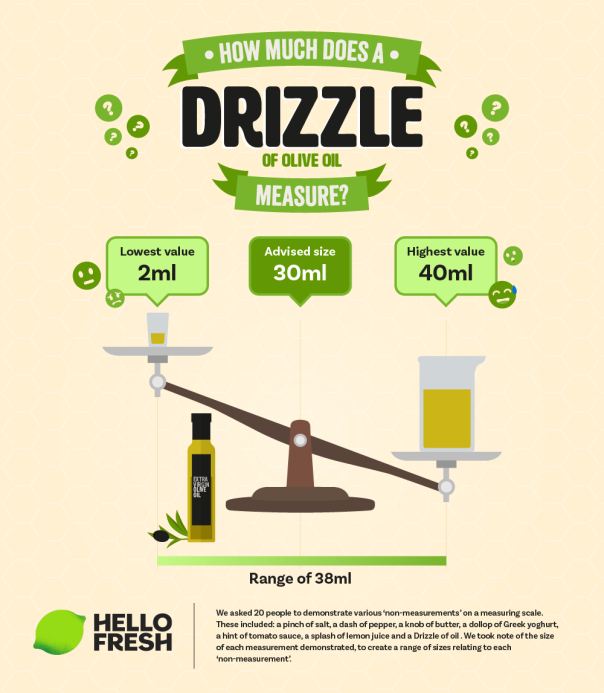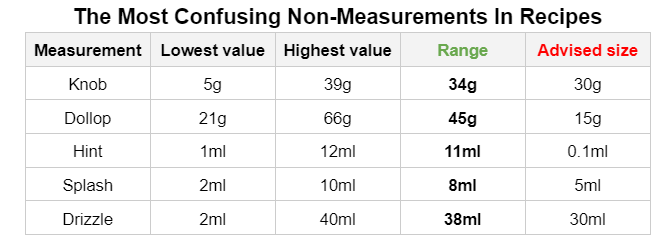
Whether you’re using recipes from a cookbook, online, TikTok or even Instagram, food content creators around the world often approach their measurements with a range of different terms that can leave cooks vulnerable to their own interpretations.
Google searches for ‘how much is a pinch of salt?’ are up 48% in the last year as confusion becomes the norm globally for these non-measurement measurements. The term with the most variety in size within the sampling was a ‘dollop’ with a wide range of 45g differences in demonstrations.
Results portrayed that individuals felt smaller descriptions such as a ‘pinch’ or a ‘dash’ were fine in a recipe as they were unlikely to ruin a dish but that more clarity was needed for larger measurements with one participant feeling they would struggle with vague measurements for a meal’s key ingredient.

Sam Richards, recipe development lead at HelloFresh, said: “Recipes are great for giving new, unseasoned cooks more confidence in the kitchen but that only works if they’re easy to follow. Easy to follow recipes should be clear, concise and not have too many steps involved. The ingredients list shouldn’t leave too much space for confusion and should be measured in a way that’s accessible to everyone staying consistent throughout.
“Once cooks gain more confidence they will be able to venture off the plan to increase certain tastes and flavours to their liking but this should be due to personal preference, not because a recipe is too difficult to interpret. We always provide clear and easy-to-follow instructions for our customers, so that you never have to be confused.”